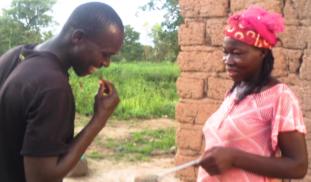Please wait...
About This Project
Food insecurity and environmental degradation disproportionately affect the world’s poorest. Our project tackles this.
We will develop a protocol for farmers in Burkina Faso to breed edible caterpillars, a local delicacy, year-round. Caterpillars are rich in protein, iron and zinc, have a high market value, and are a beloved food source.
We’ve consulted many stakeholders, from the FAO to rural smallholders.
With your help, we'll work to give people control of their food and income.
More Lab Notes From This Project

Browse Other Projects on Experiment
Related Projects
Let's increase scientific collaboration by giving scientists the credit they deserve
An over-reliance on authorship to index researchers' achievements has held back scientific collaboration...
Democratize Biotech! Can community labs jumpstart distributed production/distribution of critical biotech tools?
Equitable access to biotechnology is a global challenge in low-resource settings where there is limited...
FROcasting: A pilot of forecasting in the scientific review of focused research organizations
Scientific grant review consists of experts assessing the approach and impact of a given proposal. The process...





